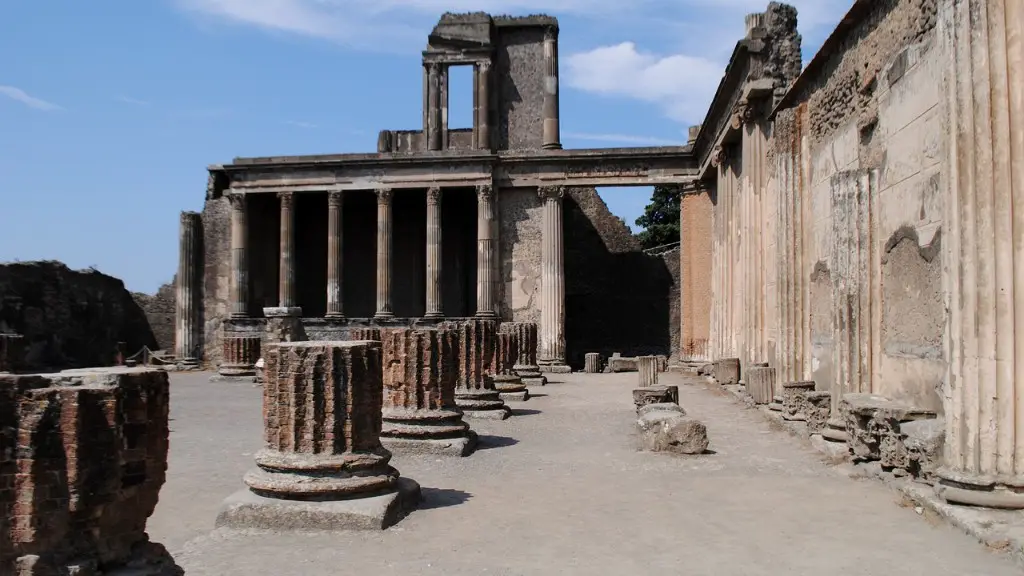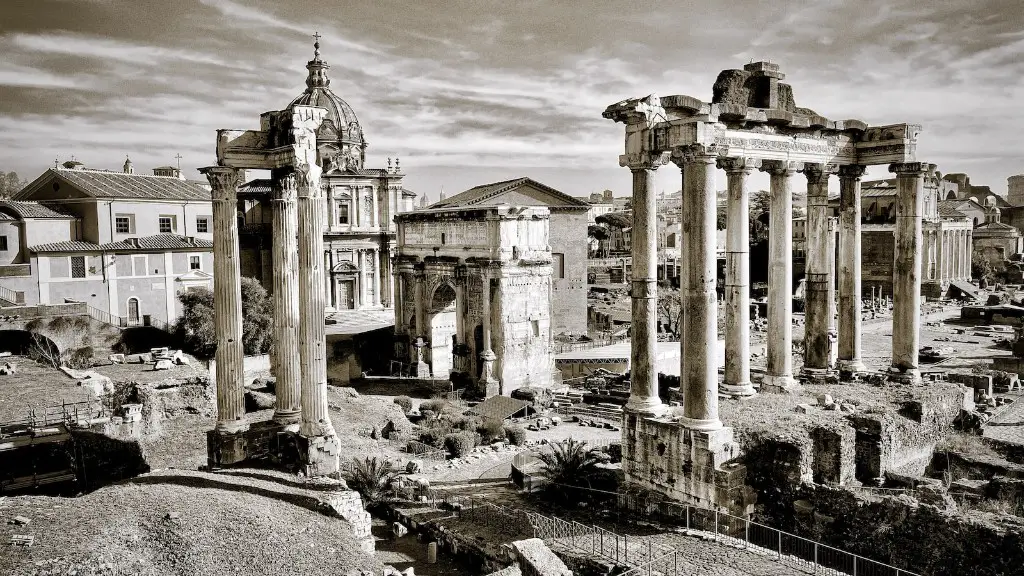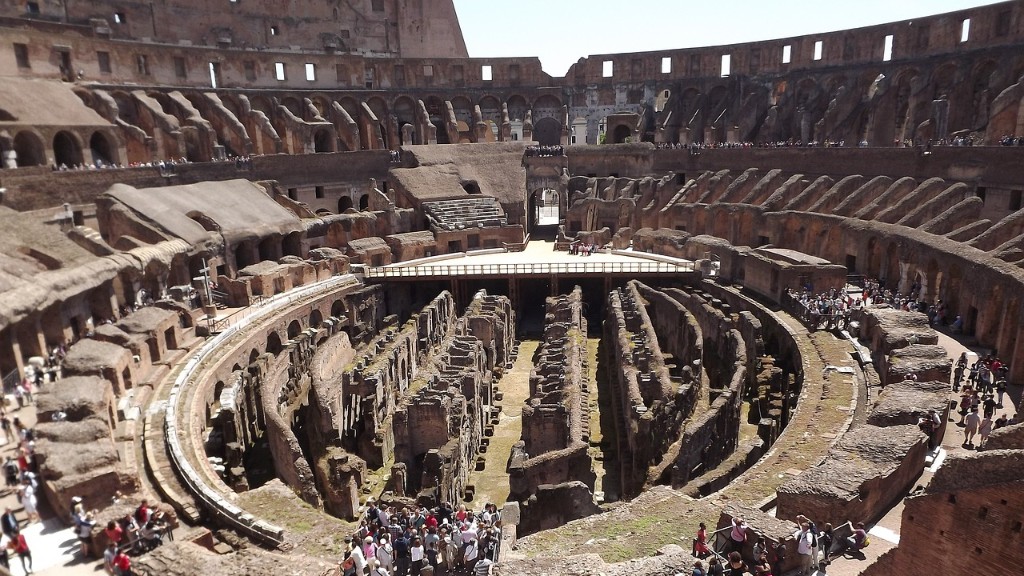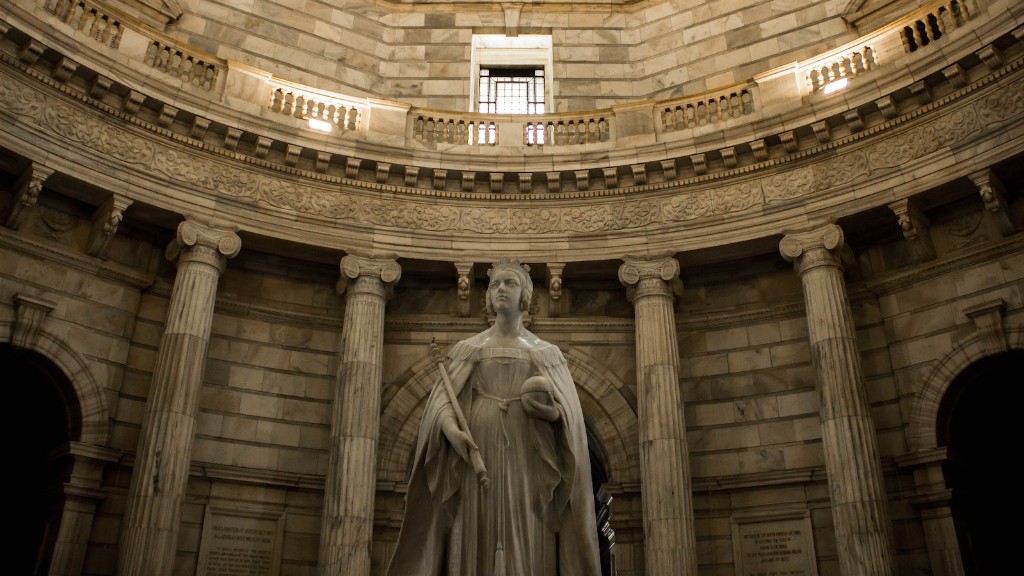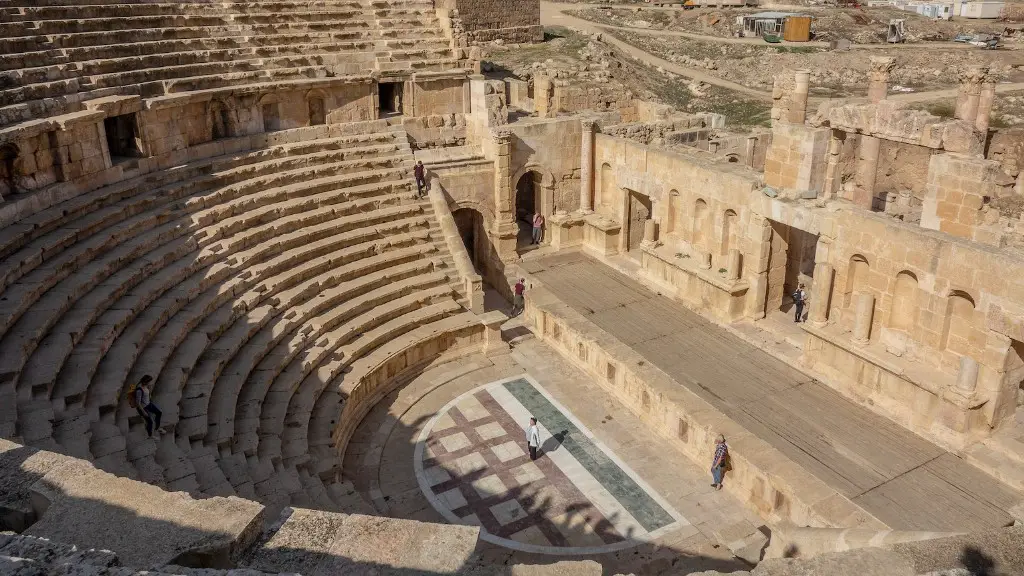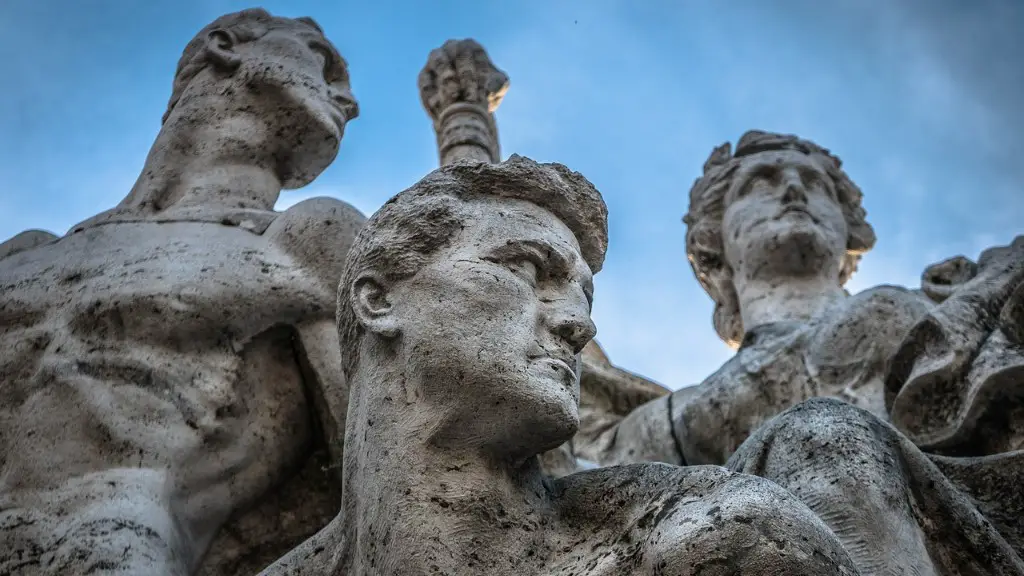Money in Ancient Rome
Money in ancient Rome was a complex economy built around a system of coins and notes. Unlike today, ancient Romans used a number of different coins and currency, but they also relied heavily on barter. Bartering was used to pay for goods and services, often in the form of a trade-off between two parties; one party offered a product or service in exchange for another’s. It was common to use a combination of bartering, coins and notes to make payments in the ancient Roman world.
The main currency used in ancient Rome was the Roman Denarius. It was a silver coin used in everyday transactions. It was equivalent to about 4 US dollars in modern equivalent. The denarius had a standard weight of 3.4 grams, but was often redesigned and lowered to some extent in value in order to make it easier for Rome to fund its military campaigns. The other coins used in antiquity were the Sestertius, the Augustus, the Quadrans, the As, and the Aes. To supplement their currency, the Roman government also issued copper tokens called “nummii”.
The Roman currency was heavily regulated by the government, so taxpayers were required to pay their taxes with denarii. This ensured that the value of the currency would remain consistent and would avoid fraud. Along with coins, Roman merchants often operated on credit as well. Bills of exchange called “tabelliones” would be issued in order to pay for goods, with the promise to pay back the credit at a later time. All of these factors, combined with a complex network of laws regarding interest, land and interest accruing to the state, created an intricate and viable money system.
Despite being a complex system of monetary exchange, ancient Rome was not without its financial troubles. The Roman government struggled to manage its finances as costs for overseas wars increased and inflation over time eroded the value of its currency. This was especially true in the 2nd century AD, when the silver denarius was replaced by a bronze and lead alloy called the antoninianus. This change led to a decrease in the value of the currency, which caused a great deal of public distress. In addition, high levels of taxation and the decline of the Roman agricultural sector meant that the Roman economy struggled to keep up with the costs of its military campaigns.
The decline of the Roman empire was in part due to its economic struggles. In the 5th century, Rome was struck by numerous economic crises, and its currency fell into devaluated and disrepair. The Roman Denarius, once the most valuable currency in the world, was no longer able to support the empire and the Roman Emperor was eventually forced to add bronze and copper coins to the Roman currency in order to help pay for the dwindling Roman military, which had to resort to taxing their citizens.
Money played a vital role in the rise and fall of the ancient Roman empire. It enabled Roman citizens to buy goods and services, support their families and maintain a functioning economy in the face of financial hardship. The use of bartering, coins and notes as well as a complex web of laws were fundamental in allowing ancient Romans to operate their economy and allowed the empire to expand and eventually conquer the known world.
Minting of Ancient Roman Coins
The production of coins in ancient Rome was a long and expensive process. Coins were usually made from copper, silver and gold, and were hand-struck by engineers at the Roman minting facility. The process involved purifying the metals and creating an alloy by hand. The metal was then poured into a mould, cooled, polished and stamped with designs preparing the coin to be presented to the ruler for approval. Coins in the Roman world could not be minted without the ruler’s approval, indicating his name and confirming the coins’ authenticity. This made ancient Roman money a highly efficient system; coins regularly circulated and the value of currency remained consistent.
The Roman emperors could also issue coins with a dedication to a god or goddess, often in a call to propitiate their favour in times of need. It was not uncommon for Roman emperors to mint coins as gifts for their subjects as a symbol of generosity. While this granted the public a sense of patronage from the ruler, it was also a way for the emperor to legitimise his rule. The coins used in the Roman world reflected the political and religious power of the emperor.
The Roman minting system was an intricate process, but it was necessary to ensure the consistency and accuracy of coins in circulation. Coins in the ancient Roman world were one of the main means of payment throughout the entire empire. They were valuable and reliable, allowing for a well-organised system for taxation and for the circulation of goods and services.
Financial Crisis in Ancient Rome
The financial crisis experienced by ancient Rome has been well documented throughout history. Rome’s currency bore the brunt of the crisis as citizens and merchants alike sought to hedge against rising prices. Gold coins, which had become scarce, were often hoarded instead of used in transactions. This resulted in the Roman economy no longer being able to pay for its war campaigns, as well as high levels of taxation.
The ensuing financial crisis lasted many years, and its effects on the Roman economy continue to be studied to this day. Even with the introduction of a barter system, the Roman economy was unable to sustain its previous level of success. This led to a decrease in trade and commerce, as well as a rise in poverty and social unrest. To combat the financial struggles, the Roman Emperor began to issue bronze and copper coins of a lesser value, which helped to reduce inflation.
Despite its financial problems, the Roman government began to transition to a managed money system which was able to keep its economy functioning. This was done through the introduction of “gentium peregrinum”, or foreign coins, in an attempt to bolster the value of its currency. This, combined with the increased circulation of coins throughout the empire, helped to keep the Roman economy relatively stable.
Money and the Roman Army
The Roman army was one of the most powerful forces in the ancient world. Its army was funded partially by taxes, but mainly by the money from the Roman coins in circulation. As the Roman empire expanded, the army had to be expanded in order to protect its citizens and maintain control over the conquered lands. This, however, was incredibly costly and could only be sustained through the wealth generated by its currency.
The Roman army also had its own bank, which was responsible for managing the finances of the entire force. This allowed the army to pay its soldiers more efficiently and provided a system through which conquests could be funded. This is in stark contrast to other militaries in the ancient world, which relied on plundering conquered lands to gain funds.
As well as being a financial asset for the army, money in ancient Rome was also used as a form of reward and motivation. Soldiers who proved themselves in combat were often rewarded with money or coins as a sign of honour and recognition. This was seen as a great privilege, and these coins often featured the images of the emperor or other gods, reflecting the honour associated with the rewards.
Money and Religion in Ancient Rome
In ancient Rome, money was intrinsically connected to the religious practices of the time. Roman gods and goddesses were often present on coins and could serve as economic symbols of the emperor’s divine power. Coins could be used to pay tribute to these deities, as well as to express piety and gratitude for their protection and guidance.
Coins were also associated with fortune-telling, with a method of divination called “haruspex” interpreting the images on coins to divine the future. Coins with images of gods or heroes were also seen as a good luck charm, and could be kept with the hope of a better future for its possessor.
The use of coins in temples and graves was also common in the ancient Roman world. Coins in the temple or grave of a deity were often used as offerings and symbols of honour. This practice was also used to appease the gods, as it was believed that they could be influenced by the act of giving.
Money and Social Hierarchy in Ancient Rome
The abundance of money in circulation in ancient Rome created a clear social hierarchy. Wealthy individuals were able to buy luxurious items, while the poor were often left destitute. This distinction between the wealthy and the poor was highly visible in Rome, as the former could purchase land, homes and goods while the latter could not.
The social distinctions extended to the Roman government as well. Wealthy individuals had a much higher chance of being accepted into the Senate or appointed as magistrates due to their wealth and influence. This created an unequal system in which the wealthy had more power and influence than the rest of society.
That being said, not all wealthy individuals in ancient Rome abused their power. Some wealthy aristocrats built schools, hospitals, libraries and other public works to benefit the people. These philanthropic efforts could also be seen on coins, which often featured scenes of public works and used as symbols of generosity.
Money was an integral part of the social hierarchy in ancient Rome. It enabled those who had the means to purchase items of luxury and influence the government, while the rest of society was forced to rely on whatever limited resources they had. This system of inequality was one of the main contributors to the decline of the Roman Empire.
